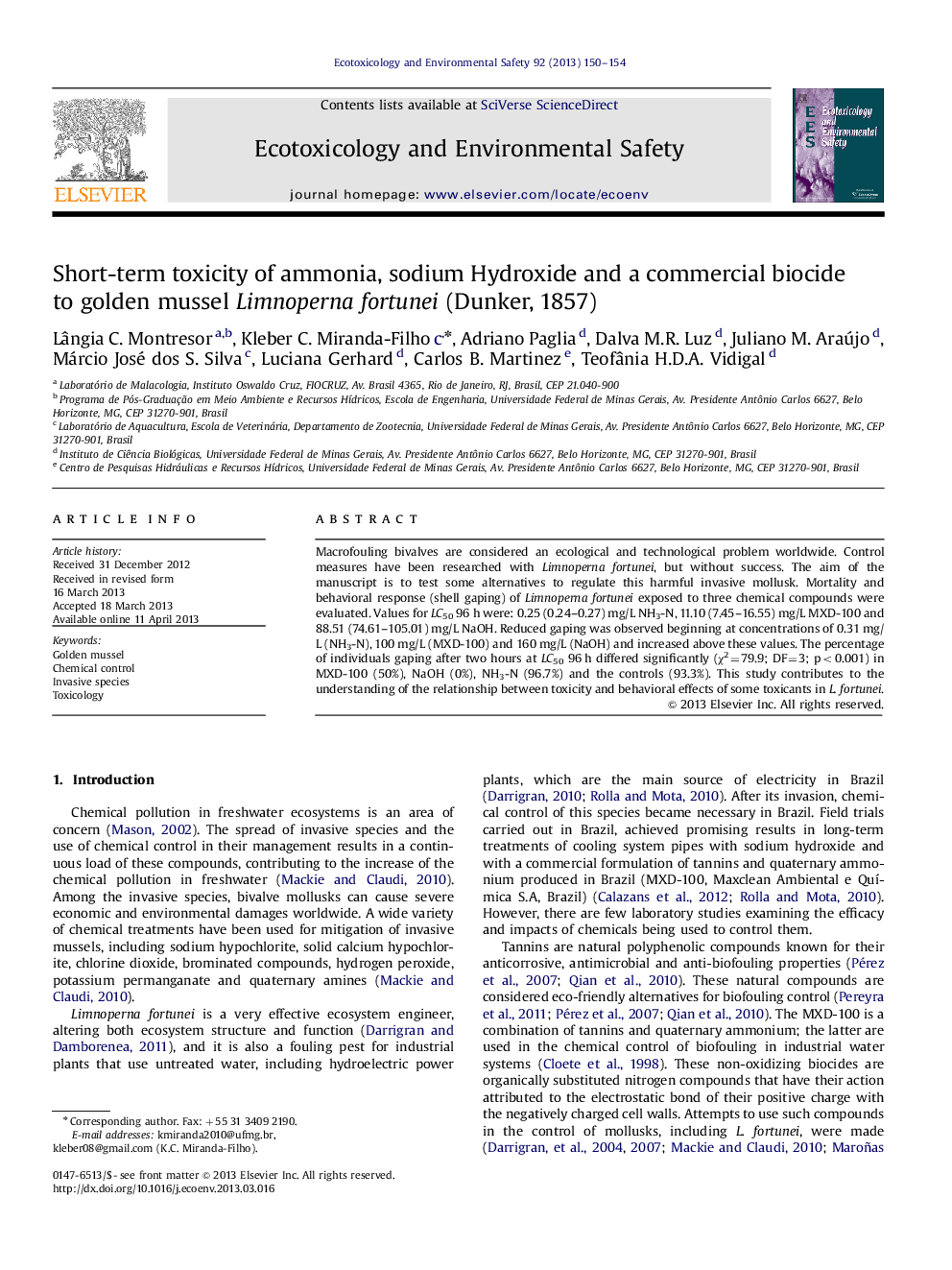| Article ID | Journal | Published Year | Pages | File Type |
|---|---|---|---|---|
| 4420446 | Ecotoxicology and Environmental Safety | 2013 | 5 Pages |
•Toxicological effects of NH3-N, a commercial tannin and NaOH on Limnoperna fortune.•The sensitivity of the golden mussel to ammonia could be used in control strategies.•No behavioral change when exposed to the LC50 96-h NH3-N.
Macrofouling bivalves are considered an ecological and technological problem worldwide. Control measures have been researched with Limnoperna fortunei, but without success. The aim of the manuscript is to test some alternatives to regulate this harmful invasive mollusk. Mortality and behavioral response (shell gaping) of Limnoperna fortunei exposed to three chemical compounds were evaluated. Values for LC50 96 h were: 0.25 (0.24–0.27) mg/L NH3-N, 11.10 (7.45–16.55) mg/L MXD-100 and 88.51 (74.61–105.01) mg/L NaOH. Reduced gaping was observed beginning at concentrations of 0.31 mg/L (NH3-N), 100 mg/L (MXD-100) and 160 mg/L (NaOH) and increased above these values. The percentage of individuals gaping after two hours at LC50 96 h differed significantly (χ2=79.9; DF=3; p<0.001) in MXD-100 (50%), NaOH (0%), NH3-N (96.7%) and the controls (93.3%). This study contributes to the understanding of the relationship between toxicity and behavioral effects of some toxicants in L. fortunei.
